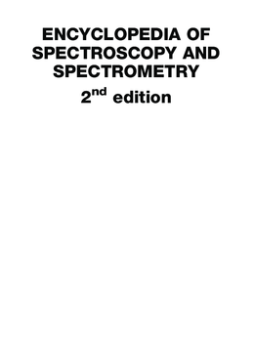
Additional Information
Book Details
Abstract
The Second Edition of the Encyclopedia of Spectroscopy and Spectrometry pulls key information into a single source for quick access to answers and/or in-depth examination of topics. "SPEC-2" covers theory, methods, and applications for researchers, students, and professionals—combining proven techniques and new insights for comprehensive coverage of the field. The content is available in print and online via ScienceDirect, the latter of which offers optimal flexibility, accessibility, and usability through anytime, anywhere access for multiple users and superior search functionality.
No other work gives analytical and physical (bio)chemists such unprecedented access to the literature. With 30% new content, SPEC-2 maintains the "authoritative, balanced coverage" of the original work while also breaking new ground in spectroscopic research.
- Incorporates more than 150 color figures, 5,000 references, and 300 articles (30% of which are new), for a thorough examination of the field
- Highlights new research and promotes innovation in applied areas ranging from food science and forensics to biomedicine and health
- Features a new co-editor: David Koppenaal of Pacific Northwest National Laboratory, Washington, USA, whose work in atomic mass spectrometry has been recognized internationally
Reviews of the first edition:
“There are many professionals . . . who would profit from this set in their libraries. –CHOICE
“Outstanding effort . . . the entries [are] authoritative, with many written by the best-known workers in the field. A good balance of both breadth and depth of coverage. –APPLIED SPECTROSCOPY “This opus of more than 3,300 pages covers an extraordinary range of topics relating to spectroscopy and mass spectrometry. Editors Lindon, Tranter, and Koppenaal are specialists in biological NMR spectroscopy, chiral analytical methods, and atomic mass spectrometry, respectively. This edition represents a major update; though the majority of entries are reprinted verbatim from the first edition (CH, Dec'00, 38-2171; edited by Lindon, Tranter, and J. L. Holmes), the second edition features many new entries focused mainly on technologies that emerged in the last decade. These include proteomics and NMR studies on biofluids. Entries in the encyclopedia are classified as theory, methods/instrumentation, applications, historical perspectives, or overviews and are written in the style of a review journal article, ranging from about 5 to 15 pages. Clearly written and containing numerous figures (some in full color), tables, and extensive references, entries are mostly understandable to a typical working chemist, though a minority are quite specialized. The alphabetical arrangement is usable, but a subject-based arrangement might be more convenient for researching related topics.
This encyclopedia is unique in its scope and depth. It aims to assemble a comprehensive, balanced collection of information about both established and cutting-edge spectroscopic and spectrometric science, covering theoretical and practical aspects while maintaining readability and accessibility. Inevitably, in such an ambitious work, some important topics in rapidly evolving fields will be overlooked; e.g., little mention is made of the electron-transfer dissociation technique in mass spectrometry. Entries reprinted from the first edition were not updated at all. While newer entries often bring the information up-to-date, some of the older entries remain outdated, particularly in their bibliographies. Overall, this encyclopedia gathers vast amounts of information into a single work. Though imperfect, it is useful for working chemists and for others, including advanced students, as a reference in spectroscopy and spectrometry from ATR to Zeeman. Summing Up: Recommended. Upper-division undergraduates through professionals/practitioners. -- E. J. Chang, York College –CHOICE, June 2011 Vol. 48 No. 10
